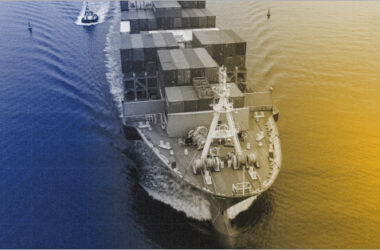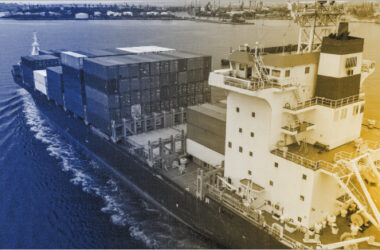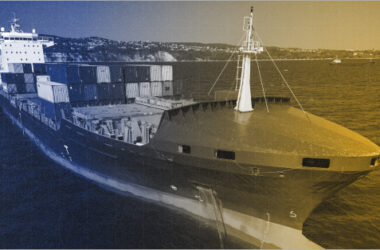An inland Marine Insurance Policy is a type of insurance that covers property that is in transit or stored away from the owner’s primary location. This type of insurance policy is different from traditional property insurance policies, which typically only cover property that is located at a specific address. Inland Marine Insurance Policies are designed to protect property that is constantly on the move, such as construction equipment, art pieces, and computer equipment. In this comprehensive guide, we will investigate the intricacies of Inland Marine Insurance, shedding light on its purpose, coverage areas, and the specific scenarios in which it becomes an invaluable shield against unforeseen events.
Understanding Inland Marine Insurance Policy
An Inland Marine Insurance Policy is a specialized form of insurance that provides coverage for the transport of goods and materials within the country. Despite its name, this type of insurance doesn’t solely pertain to marine-related risks but extends its coverage to various modes of transportation, including road, rail, and air. This type of insurance policy is designed to protect property that is not covered by traditional commercial property insurance policies.
Inland Marine Insurance Policy covers a variety of property types, including:
- Property that is in transit, such as goods being transported by truck, train, or aeroplane
- Property that is stored at a location that is not the insured’s primary location, such as property stored in a warehouse or at a construction site
- Property that is used in the transportation of goods, such as trailers, cargo containers, and other equipment
The policy typically covers loss or damage to the property caused by a variety of perils, including theft, fire, and natural disasters. Inland Marine Insurance Policy can also cover liability for damage to property owned by others, such as damage caused by a truck or other vehicle used to transport goods.
Coverages provided by Inland Marine Insurance Policy
An Inland Marine Insurance Policy in India provides coverage for a diverse range of perils associated with the transportation of goods and valuable items, as well as during temporary storage. The specific coverages may vary among insurance providers, but here are common types of coverages typically included in an Inland Marine Insurance Policy:
Goods in Transit Coverage: Protects against physical loss or damage to goods while in transit by various modes of transportation, such as road, rail, air, or inland waterways.
Builder’s Risk Coverage: Provides coverage for materials, fixtures, and equipment being used in the construction or renovation of a building. This coverage often extends to the construction site and can include transit to and from the site.
Installation Floater: Covers materials, equipment, or machinery while in transit and during the installation process. This is particularly relevant for businesses involved in the installation of equipment at client sites.
Fine Arts Coverage: Offers protection for fine art pieces during transportation or temporary storage. This coverage is essential for art dealers, collectors, and institutions involved in the movement of valuable artworks.
Exhibition Coverage: Provides coverage for items on display or in transit to and from exhibitions or trade shows. This coverage is crucial for businesses or individuals participating in events where their goods are showcased.
Equipment Floaters: Covers movable equipment and machinery against loss or damage while in transit or during temporary storage. This is relevant for businesses that frequently move equipment between locations.
Warehouse Legal Liability: Protects against loss or damage to goods stored in warehouses. This coverage is beneficial for businesses that utilize third-party storage facilities.
Valuable Papers and Records Coverage: Offers protection for important documents, records, or valuable papers against loss or damage during transit or storage.
Debris Removal Coverage: Covers the cost of removing debris resulting from a covered loss. This can include the cost of cleaning up and disposing of damaged goods or materials.
Importance of Inland Marine Insurance Policy for Businesses
The importance of an Inland Marine Insurance Policy for businesses in India cannot be overstated, especially for those involved in the transportation or temporary storage of goods. Here are several reasons highlighting the significance of Inland Marine Insurance for businesses:
- Coverage During Transit:
Businesses frequently transport goods within the country using various modes such as trucks, trains, aeroplanes, or inland waterways. Inland Marine Insurance provides crucial coverage for goods in transit, protecting against risks like accidents, theft, and natural disasters.
2. Protection for High-Value Items:
For businesses dealing with high-value goods, such as electronics, machinery, or fine art, Inland Marine Insurance offers specialized coverage. This ensures that the financial impact of potential loss or damage to these valuable items is mitigated.
3. Flexibility Across Locations:
Unlike standard property insurance that is tied to specific locations, Inland Marine Insurance provides coverage for goods that move between different places. This flexibility is particularly beneficial for businesses with a dynamic supply chain or those engaged in temporary storage at various locations.
4. Mitigation of Warehouse Risks:
For businesses utilizing warehouses or storage facilities, Warehouse Legal Liability coverage ensures that goods stored at these locations are protected. This is essential for mitigating risks associated with fire, theft, or other perils.
5. Compliance with Regulatory Requirements:
In certain cases, regulatory bodies or transportation authorities may mandate the use of Inland Marine Insurance, especially for goods transported via specific modes like railways. Adhering to such requirements is crucial for legal compliance.
6. Business Continuity:
In the event of a covered loss, Inland Marine Insurance helps businesses recover financially, allowing them to replace or repair damaged goods. This is vital for ensuring business continuity and minimizing disruptions to operations.
7. Customizable Coverage:
Inland Marine Insurance Policies are often customizable, allowing businesses to tailor coverage based on their specific needs and the nature of the goods being transported or stored. This ensures a more precise and comprehensive risk management strategy.
8. Peace of Mind:
Knowing that goods are protected during transit or temporary storage provides business owners with peace of mind. This confidence is invaluable, allowing them to focus on core business activities without constant worry about potential financial losses.
An Inland Marine Insurance Policy is a critical component of a comprehensive risk management strategy for businesses in India. Its broad coverage, flexibility, and ability to adapt to diverse needs make it an essential tool for mitigating the uncertainties associated with the movement and storage of goods.
How to Choose the Right Inland Marine Insurance Policy
When it comes to inland Marine Insurance Policies, there are a number of factors to consider before making a decision. This section will outline some key considerations to help you choose the right policy for your needs.
Assessing Your Needs
The first step in choosing an inland Marine Insurance Policy is to assess your needs. This involves considering the type of property you need to insure, the level of coverage you require, and any specific risks associated with your business or industry.
To assess your needs, consider the following questions:
- What type of property do you need to insure?
- What are the risks associated with transporting or storing this property?
- What level of coverage do you require?
- Are there any specific risks associated with your business or industry?
Comparing Different Policies
Once you have assessed your needs, the next step is to compare different policies. This involves looking at the coverage options, deductibles, and premiums of each policy to determine which one offers the best value for your needs.
To compare different policies, consider the following factors:
- Coverage options: What types of losses are covered under the policy?
- Deductibles: How much will you need to pay out of pocket before the policy kicks in?
- Premiums: How much will the policy cost you in premiums?
Seeking Professional Advice
Choosing the right inland Marine Insurance Policy can be a complex process. If you are unsure about any aspect of the policy, it is a good idea to seek professional advice. An insurance broker or agent can help you understand the different policy options available and recommend a policy that meets your needs. They can also help you navigate the claims process if you need to make a claim.
Limits and Deductibles in Inland Marine Insurance Policy
Limits and deductibles are important aspects of any insurance policy, including inland Marine Insurance. Let’s break down the concepts mentioned in your description:
- Scheduled Limits: A scheduled limit refers to a specific coverage limit assigned to individual items or categories of property listed in the policy. For example, you may specify a certain limit for high-value items such as equipment, machinery, or other specialized assets. Each listed item is insured up to its scheduled limit.
- Blanket Limits: A blanket limit applies to a group of items rather than individual ones. Instead of specifying separate limits for each item, a single overall limit is set for a category or group of property. This approach offers flexibility and convenience, especially when insuring numerous items of lower value. The total value of all covered items cannot exceed the blanket limit.
- Combination of Limits: Some Inland Marine Insurance Policies may utilize a combination of scheduled and blanket limits. This allows policyholders to tailor coverage to their specific needs. High-value items may have scheduled limits for precise coverage, while a blanket limit may apply to general categories of property.
- Choosing Limits: When purchasing Inland Marine Insurance, policyholders typically have the flexibility to select specific limits for their most valuable items and blanket limits for other property. This ensures adequate coverage for high-value assets while providing broader protection for remaining property.
- Example: In the scenario provided, a policyholder may choose a specific limit of Rs 2,50,000 for a new bulldozer, ensuring sufficient coverage for this high-value asset. Additionally, a blanket limit of Rs 40,000 may be selected to cover tools and other property. In the event of a covered loss, the insurer will pay up to the applicable limit (either scheduled or blanket) for the damaged property.
Conclusion
Inland Marine Insurance is a lifeline for businesses engaged in the movement and storage of goods across the diverse landscapes of this vast nation. This insurance provides a shield against the unpredictable forces that could otherwise disrupt the flow of commerce. By choosing the right policy and coverage options, business owners can ensure that their valuable property is protected in the event of loss or damage.
Frequently Asked Questions
- Why is it called inland marine coverage?
Despite the name, Inland Marine Insurance has nothing to do with ships or boats. The term “marine” originally referred to goods transported by sea, but over time it has come to include any form of transportation. Inland marine coverage was created to cover property that was being transported over land.
2. What types of properties are not covered by an inland marine policy?
While Inland Marine Insurance covers many types of property, there are some exclusions. For example, it typically does not cover property that is permanently attached to a building, such as HVAC systems or plumbing. It also does not cover property that is being transported by sea, as this would be covered by Ocean Marine Insurance.
3. What is inland marine EDP coverage?
Inland marine EDP coverage is a type of Inland Marine Insurance that is specifically designed to cover electronic data processing equipment. This can include computers, servers, and other electronic equipment that is used to store and process data. EDP coverage can protect against losses due to damage, theft, or other covered perils.
4. What is the annual policy of Marine Insurance?
The annual policy of Marine Insurance is a type of policy that provides coverage for a full year. This can be a good option for businesses that have frequent transportation or storage needs, as it provides continuous coverage throughout the year. The policy can be customized to meet the specific needs of the business and can cover a wide range of property and liability risks.








